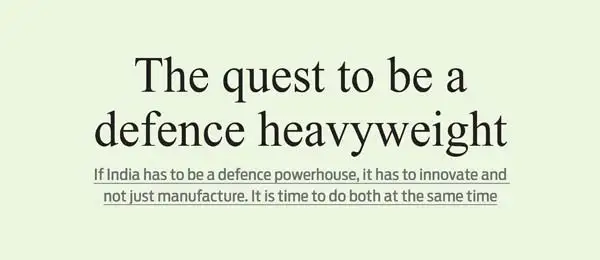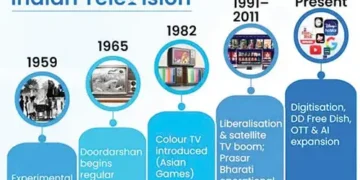K Srinivasan
ON June 5, Dassault Aviation announced that it had partnered with Tata Advanced Systems Limited (TASL) and signed four Production Transfer Agreements to produce the fuselage for the Rafale fighter aircraft in India. TASL, according to the agreement, will produce key structural sections of the Rafale fuselage, including the lateral shells of the rear fuselage and the complete central and front sections.
This is one more step in the evolution of India’s aerospace sector and helping the country emerge as a major hub for aircraft manufacturing. That we can produce such complex components as part of the `Make in India` programme is a testament to India’s growing industrial capabilities.
A sterling record
It is no surprise that Dassault has tied up with TASL, which has a sterling record of working across the aerospace ecosystem – commercial, defence and engine makers. Almost anybody who is anybody in the aerospace manufacturing firmament has a collaboration with the Tatas, now recognised globally for delivering large fuselage assemblies, complex metallic parts and long-member composite structures efficiently and on time. Infact, cabins for the US President’s helicopter, known as Marine One, are manufactured in India by TASL. These cabins are for the Sikorsky VH-92 Patriot, which is the designated primary presidential helicopter. Above all this, Tata also has a joint venture with Airbus to produce the C295 aircraft in Vadodara.
The Tatas, especially the late Ratan Tata, whose vision laid the foundation for the company to become an aerospace manufacturing giant, gave the country a ready platform to create a JV and add any number of options to the platform. But if India has to truly emerge as an aerospace manufacturing hub, it will have to enlarge the cake and bring in more big companies into the aerospace matrix. There are two good opportunities around the corner. One is the country’s ambitious Advanced Medium Combat Aircraft (AMCA) programme.
The AMCA, with the Aeronautical Development Agency (ADA) leading the charge along with Hindustan Aeronautics Limited (HAL), is India’s 5thgeneration stealth fighter project. One of the key elements underlined by the Government when this project was announced was the decision to involve a large number of private sector companies to expand India’s aerospace domain, accelerate delivery timelines, and, of course, give a boost to Atmanirbhar Bharat.
Additional responsibilities
According to IDRW.org: ‘’The MoD is now reviewing the structure of the public-private collaboration model for the AMCA. Plans are underway to offload additional responsibilities – potentially including sub-system development, avionics integration, structural assembly, and ground support systems – to interested private sector firms. This would significantly increase the percentage of workshare for private companies, ensuring more substantial participation and improved returns.’’
This will be the most sensible route to take. If the correct partnerships are crafted in the next six months, a prototype by 2028 will not be an improbable ambition. If the Government can set a similar programme rolling for creating a home-grown power plant (Kaveri), it will accelerate India’s quest to be an aerospace manufacturing heavyweight. Also, this is just one of the many projects in the pipeline. In the case of missiles, India has established an enviable record of excellence. But there is much more that we need to do in the development of robotic hardware for our land forces or even in terms of armoured vehicles.
Huge investment
One of the reasons why this is not happening is because of the huge investments required and the long gestation. What the government needs to do is to set up an agency, similar to the US DARPA (Defence Advanced Research Projects Agency) that is part of the US Department of Defence. According to Wikipedia: “DARPA focuses on developing innovative technologies for military use. It’s known for pushing the boundaries of technology and has been instrumental in creating technologies with both military and civilian applications, including the Internet.’’ India’s DARPA moment has arrived!
































